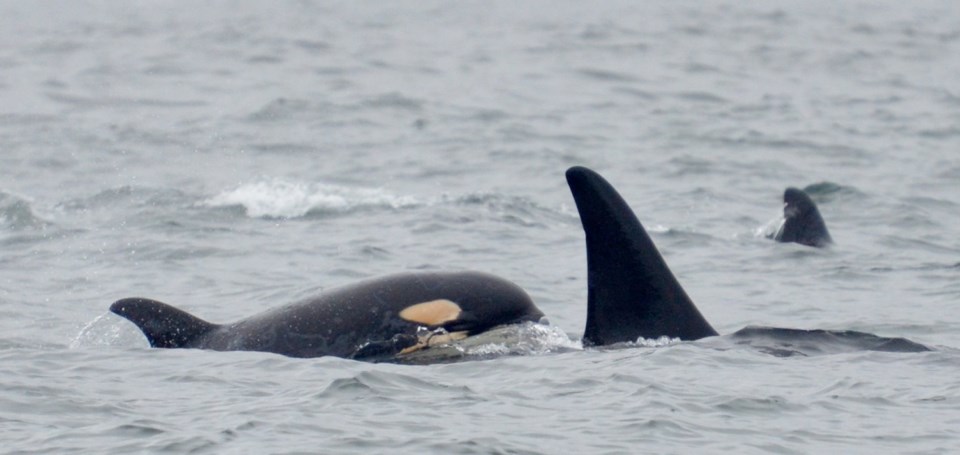Reports that a baby orca was spotted for the first time since its birth in February is good news, but it doesn’t mean the killer whale population is bouncing back, an orca education society said Tuesday.
Susan Berta, co-founder of the Orca Network, said there has to be a stronger rebound before the species can be removed from the endangered list.
“We’re really happy [calf] L121 is still alive,” Berta said.
“But we’re going to need more years of many more calves and no deaths to be able to say we’re really turning a corner.”
The Pacific Whale Watch Association said Tuesday that L121 had been seen between Cox Point and Long Beach, near Tofino.
It was the first sighting since February, when the U.S. National Oceanic and Atmospheric Administration confirmed the calf’s birth. Some observers had begun to worry that L121 had not survived, said Michael Harris, the whale-watch group’s executive director. “We all kind of thought we had lost another L-pod baby,” Harris said. “We’re glad to know it’s still alive. That’s really good news.”
L121’s birth buoyed hope for the future of the pod, which is considered the most precarious of the three southern resident orca pods. L120, born to the pod last summer, was lost during a storm in October. In February 2012, three-year-old L112 washed up dead off Washington.
Berta said the southern resident orca population was down to 79 in 2014 from a peak of 98 in the mid-1990s.
L-pod is the largest of the southern resident pods with about 35 members, but researchers are worried because few members are of the age to reproduce, Berta said.
Orcas face a 50 per cent mortality rate in their first year, so babies are not counted as part of the population until they are one year old.
Berta said the Center for Whale Research will survey both the L-pod and K-pod populations when they return to the Salish Sea, expected to be this month. Then, it will be more clear whether there have been any deaths since their annual migration following their salmon food source into the North Pacific.
Three calves were born to the J-pod in the past seven months. J-pod has about 25 members and has been generally more stable than L-pod, Berta said.
June is Orca Awareness Month in Washington state and Berta hopes B.C. will adopt a similar campaign. “It’s mainly to focus on the southern residents and their endangered status and to raise awareness about what we have, and what we could lose if we don’t do something to save them.”



